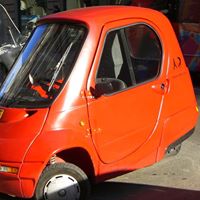Yin H Wong
age ~44
from Oakland, CA
- Also known as:
-
- Yi N Wong
- Phone and address:
- 2097 39Th Ave, Oakland, CA 94601
Yin Wong Phones & Addresses
- 2097 39Th Ave, Oakland, CA 94601
- 2234 22Nd St, Oakland, CA 94606
- San Leandro, CA
Lawyers & Attorneys
Name / Title
Company / Classification
Phones & Addresses
2733 Diamond, LLC
Real Estate
Real Estate
171 Divisadero St, San Francisco, CA 94117
President
CYBER REFINERY HOLDINGS, INC
2544 Bishop Ave, Fremont, CA 94536
Us Patents
-
Method And Apparatus For Organizing Information In A Computer System
view source -
US Patent:6613101, Sep 2, 2003
-
Filed:Feb 27, 2001
-
Appl. No.:09/796292
-
Inventors:Richard Mander - Palo Alto CA
Daniel E. Rose - San Jose CA
Gitta Salomon - Palo Alto CA
Yin Yin Wong - Menlo Park CA
Timothy Oren - Sunnyvale CA
Susan Booker - San Carlos CA
Stephanie Houde - Cambridge MA -
Assignee:Apple Computer, Inc. - Cupertino CA
-
International Classification:G06F 1700
-
US Classification:715526, 345810, 345345, 345866
-
Abstract:A method and apparatus for organizing information in a computer filing system. The method and apparatus include the creation of a pile comprising a collection of documents and displaying a graphical representation of the collection of documents. The method and apparatus further include browsing the collection of documents by pointing a cursor at a particular item in the collection of documents to reveal an indicia for the particular item in the collection of documents. The filing system can automatically divide a pile (e. g. a collection of documents from an electronic mail network) into subpiles on the basis of the content of each document in the pile, and the filing system, at the users request can automatically file away documents into existing piles in the computer system on the basis of a similarity match between the content (or other internal representation) of the document and the content (or other internal representation) of existing piles in the computer system. The filing system can also create a pile from a sample document by using the internal representation of the document as the internal representation of the new pile. The computer filing system provides various interfaces in connection with piles to the user of the system to provide feedback and other information to the user, including information concerning the documents and piles in the computers filing system.
-
Community-Based Shared Multiple Browser Environment
view source -
US Patent:6708172, Mar 16, 2004
-
Filed:Jun 14, 2000
-
Appl. No.:09/596305
-
Inventors:Yin Yin Wong - San Francisco CA
Baldo A. Faieta - San Francisco CA
Derek Chung - San Francisco CA
Ishantha Joseph Lokuge - Redwood City CA
Lalit Balchandani - San Francisco CA -
Assignee:Urbanpixel, Inc. - San Francisco CA
-
International Classification:G06F 1730
-
US Classification:707 10, 707 8, 345738, 345751, 345 13
-
Abstract:A web browsing environment that provides a graphical spatial context to associate web sites to one another and allows for interaction between users browsing the space is provided. One feature of the described embodiment is the provision of a tiling of mini browsers in one space rather than a document.
-
Interactive Memory Archive
view source -
US Patent:6760884, Jul 6, 2004
-
Filed:Dec 21, 1999
-
Appl. No.:09/468691
-
Inventors:Laurie J. Vertelney - Palo Alto CA
Baldo A. Faieta - San Francisco CA
Yin Yin Wong - San Francisco CA
Elaine Brechin - San Francisco CA
John P. Pinto - Palo Alto CA -
Assignee:Internal Research Corporation - Palo Alto CA
-
International Classification:G06F 1700
-
US Classification:7155001, 715530
-
Abstract:An authoring system and procedure for organizing photos (and other physical object types) are provided. Using the authoring system, an author organizes a set of physical objects into a particular story through an interface. Each physical object is associated with a specific identifier, such as a barcode, and the author uses an input device to scan identifiers of selected physical objects that are to be included within the particular story. The authoring process is performed off-line. Using the input device, the author adds her own commentary as part of building the story. For example, she can associate an audio clip with a particular physical object that makes up the story or with the entire story itself. In one embodiment, the input device includes a microphone for receiving voice input, as well as a barcode reader for scanning a particular barcode of a selected physical object. The author also selects one or more presentation styles that will be used to display the entire story.
-
System With Graphical User Interface Including Automatic Enclosures
view source -
US Patent:6928621, Aug 9, 2005
-
Filed:Sep 25, 2001
-
Appl. No.:09/964723
-
Inventors:Thomas J. Conrad - San Jose CA, US
Yin Yin Wong - Menlo Park CA, US -
Assignee:Apple Computer, Inc. - Cupertino CA
-
International Classification:G06F003/00
G06F009/00
G06F017/00 -
US Classification:715769, 715781, 715835
-
Abstract:A new behavior in a graphical user interface allows the user to open and close enclosures, while dragging an object. When the user pauses, gestures, or rolls over a hot spot on top of an icon or text representing a closed enclosure, a temporary window for the closed enclosure is “sprung open” to allow the user to browse inside the enclosure and possible open another enclosure contained within the temporary window. This process can be carried on throughout a hierarchy of windows as the user browses for a destination window for the drag operation. All of the temporary windows except the destination are closed when the mouse button is released, signaling the end of a drag. The user may close sprung open windows by simply moving the cursor out of the sprung open window, or by making some other gesture. If an enclosure to be sprung open was previously open on the desktop, the previously opened window may zoom over to the current mouse position, and then return to its original position when the user mouse is out of the window.
-
Computer System With Graphical User Interface Including Spring-Loaded Enclosures
view source -
US Patent:7549126, Jun 16, 2009
-
Filed:Jul 21, 2005
-
Appl. No.:11/187078
-
Inventors:Thomas J. Conrad - San Jose CA, US
Yin Yin Wong - Menlo Park CA, US -
Assignee:Apple Inc. - Cupertino CA
-
International Classification:G06F 3/00
G06F 17/00 -
US Classification:715769, 715775
-
Abstract:An apparatus for finding objects in a computer including a display and a pointing device with which a user drags a pointer on the display, having: an input that receives an input signal to indicate a drag operation; memory that stores a plurality of objects including enclosures in the memory, wherein enclosures comprise objects which may enclose other objects; window opening logic, coupled with the display, that draws windows on the display corresponding to opened enclosures, wherein a window for an opened enclosure includes identifiers within the window corresponding to objects enclosed by the opened enclosure; and, temporary window logic, coupled to the display and the pointing device, that opens a temporary window for the particular enclosure display identifiers within the temporary window corresponding to objects enclosed by the particular enclosure, in response to a drag during a drag operation of the pointer over an identifier corresponding to a particular enclosure.
-
Computer System With Graphical User Interface Including Spring-Loaded Enclosures
view source -
US Patent:7712037, May 4, 2010
-
Filed:Dec 28, 2006
-
Appl. No.:11/648053
-
Inventors:Thomas J. Conrad - San Jose CA, US
Yin Yin Wong - Menlo Park CA, US -
Assignee:Apple Inc. - Cupertino CA
-
International Classification:G06F 3/048
-
US Classification:715769, 715781, 715835
-
Abstract:A new behavior in a graphical user interface allows the user to open and close enclosures, while dragging an object. When the user pauses, gestures, or rolls over a hot spot on top of an icon or text representing a closed enclosure, a temporary window for the closed enclosure is “sprung open” to allow the user to browse inside the enclosure and possible open another enclosure contained within the temporary window. This process can be carried on throughout a hierarchy of windows as the user browses for a destination window for the drag operation. All of the temporary windows except the destination are closed when the mouse button is released, signaling the end of a drag. The user may close sprung open windows by simply moving the cursor out of the sprung open window, or by making some other gesture. If an enclosure to be sprung open was previously open on the desktop, the previously opened window may zoom over to the current mouse position, and then return to its original position when the user mouse is out of the window.
-
Method And Apparatus For Organizing Information In A Computer System
view source -
US Patent:7849035, Dec 7, 2010
-
Filed:Jul 31, 2006
-
Appl. No.:11/497460
-
Inventors:Richard Mander - Palo Alto CA, US
Daniel E. Rose - San Jose CA, US
Gitta Salomon - Palo Alto CA, US
Yin Yin Wong - Menlo Park CA, US
Timothy Oren - Sunnyvale CA, US
Susan Booker - San Carlos CA, US
Stephanie Houde - Cambridge MA, US -
Assignee:Apple Inc. - Cupertino CA
-
International Classification:G06F 17/00
G06N 5/00 -
US Classification:706 45, 706 46, 706 60
-
Abstract:A method and apparatus for organizing information in a computer filing system. The method and apparatus include the creation of a pile comprising a collection of documents and displaying a graphical representation of the collection of documents. The method and apparatus further include browsing the collection of documents by pointing a cursor at a particular item in the collection of documents to reveal an indicia for the particular item in the collection of documents. The filing system can automatically divide a pile (e. g. a collection of documents from an electronic mail network) into subpiles on the basis of the content of each document in the pile, and the filing system, at the users request can automatically file away documents into existing piles in the computer system on the basis of a similarity match between the content (or other internal representation) of the document and the content (or other internal representation) of existing piles in the computer system. The filing system can also create a pile from a sample document by using the internal representation of the document as the internal representation of the new pile. The computer filing system provides various interfaces in connection with piles to the user of the system to provide feedback and other information to the user, including information concerning the documents and piles in the computer's filing system.
-
Method And Apparatus For Organizing Information In A Computer System
view source -
US Patent:7991720, Aug 2, 2011
-
Filed:Jun 25, 2003
-
Appl. No.:10/607085
-
Inventors:Richard Mander - Palo Alto CA, US
Daniel E. Rose - San Jose CA, US
Gitta Salomon - Palo Alto CA, US
Yin Yin Wong - Menlo Park CA, US
Timothy Oren - Sunnyvale CA, US
Susan Booker - San Carlos CA, US
Stephanie Houde - Cambridge MA, US -
Assignee:Apple Inc. - Cupertino CA
-
International Classification:G06F 17/00
G06N 5/00 -
US Classification:706 45, 706 20, 706 46
-
Abstract:A method and apparatus for organizing information in a computer filing system. The method and apparatus include the creation of a pile comprising a collection of documents and displaying a graphical representation of the collection of documents. The method and apparatus further include browsing the collection of documents by pointing a cursor at a particular item in the collection of documents to reveal an indicia for the particular item in the collection of documents. The filing system can automatically divide a pile (e. g. a collection of documents from an electronic mail network) into subpiles on the basis of the content of each document in the pile, and the filing system, at the user's request can automatically file away documents into existing piles in the computer system on the basis of a similarity match between the content (or other internal representation) of the document and the content (or other internal representation) of existing piles in the computer system. The filing system can also create a pile from a sample document by using the internal representation of the document as the internal representation of the new pile. The computer filing system provides various interfaces in connection with piles to the user of the system to provide feedback and other information to the user, including information concerning the documents and piles in the computer's filing system.
Resumes

Yin Wong
view source
Instructor - Mathnasium
view sourceWork:
Instructor - Mathnasium

Instructor - Mathnasium
view sourceWork:
Instructor - Mathnasium

Yin Wong
view source
Yin To Wong
view source
Research Associate At Kinemed, Inc
view sourceLocation:
San Francisco Bay Area
Industry:
Biotechnology

Economics Major At University Of California, Berkeley
view sourceLocation:
San Francisco Bay Area
Industry:
Financial Services
Youtube
Myspace
Plaxo

wong yin wai
view source
WONG Yuk Yin Miranda
view sourceHong Kong

Lu Yin Wong
view sourceNestle USA
Flickr

Yin Hiong Wong
view source
Yin Ming Wong
view source
Yin Shin Wong
view source
Yin Ping Wong
view source
Yin Heong Wong
view source
Yin Peng Wong
view source
Yin Loon Wong
view source
Yin Ping Wong
view sourceGoogleplus

Yin Wong
Work:
Mandarin house - Waiter (2012)
Education:
Richard Huish College

Yin Wong

Yin Wong

Yin Wong

Yin Wong

Yin Wong

Yin Wong

Yin Wong
Classmates

Yin Wong
view sourceSchools:
Marc Garneau High School North York Morocco 1996-2000
Community:
Patrick Sobel, Jason Ying, Carolyn Keller, Trish Ross

Tony / Shek-Yin Wong | In...
view source
Brookfield High School, O...
view sourceGraduates:
Jill Beckstead (1981-1985),
Chun Yin Wong (1983-1987),
Tank Brookfield (1985-1989)
Chun Yin Wong (1983-1987),
Tank Brookfield (1985-1989)

Yin pan Wong-ping | St. A...
view source
International High School...
view sourceGraduates:
yin Wong (1989-1993),
Jose Jimenez (1994-1998),
Lin Aung (1990-1993),
Yamileth Escobar (1986-1989),
Hanwook Ryu (1997-1999)
Jose Jimenez (1994-1998),
Lin Aung (1990-1993),
Yamileth Escobar (1986-1989),
Hanwook Ryu (1997-1999)

McGill University - Elect...
view sourceGraduates:
Chi Yin Wong (1979-1983)

Yin May Wong, Le Moyne Co...
view source
Florence Nightingale Juni...
view sourceGraduates:
Yin Wong (1976-1980),
Elizabeth Ochoa (1983-1986),
Jimmy Su (1997-2000)
Elizabeth Ochoa (1983-1986),
Jimmy Su (1997-2000)
Get Report for Yin H Wong from Oakland, CA, age ~44














